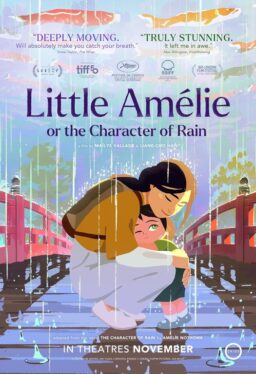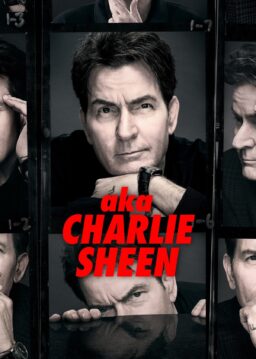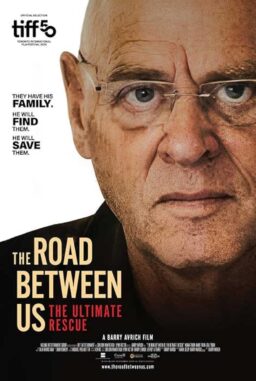Recently I found myself, for the fifth time, among the denizens of a place that celebrates my favorite cinematic genre: the historic Castro Theatre in San Francisco, home of the Film Noir Foundation’s 11th Annual Noir City Film Festival. The 27-film retrospective, which ran Jan. 25 to Feb. 3, featured newly restored prints, thanks to the Film Noir Foundation, as well as obscure films that may not have been seen in decades.
Each evening had its own subject, from the wildly popular Bad Girls Night and San Francisco Noir Night, to the newly created African-American Noir Night and 3-D Noir Night. San Francisco Noir is the most popular night in the Festival, though Bad Girls Night is always my favorite. Unfortunately, I missed Bad Girls Night this year due to Bad Odie Day at the St. Francis Hospital Emergency Room. Bad luck befalls all noir heroes, so this revolting development did not surprise me in the least.
Of the 27 films shown, I saw 21. Here are five worth mentioning:
1. “The Sniper” (1952) — Twenty years before “Dirty Harry,” Edward Dymtryk directed a film about a San Francisco serial killer. Played by Arthur Franz, the killer yearns to be caught but keeps getting lucky in ironically cruel ways. In an early scene where he visits a hospital after horribly burning his hand, Franz practically pleads to be locked up. The doctor dismisses him anyway, and more victims get shot. Franz’s victims are usually women whom he comes in contact with at the dry cleaner where he works as a delivery man. The scenes of Franz assembling his gun, and the subsequent murders, are tensely crafted by Dymtryk; the murders themselves are stunningly violent for 1952, with the victim (and the audience) caught off-guard by gunfire piercing the silence. Franz’s stalking of Jean Darr (Marie Windsor), a jazz pianist he has all the wrong feelings for, feels like something from a horror movie, with a devastating payoff.
His nemesis, a cop named Lt. Frank Kafka (!) played by Adolphe Menjou, is helpless until know-it-all psychologist colleague (Richard Kiley) starts filling in the blanks on Franz’s profile. Kiley’s omnipotent knowledge gets to be rather amusing, but “The Sniper” rarely lets up on suspense. The film’s climax, a chase along rooftops involving the sniper, the police, and innocent bystanders, is gripping and tragic. All this plays out against the backdrop of a San Francisco 61 years earlier than the one I was currently inhabiting. Some of the locations may have been altered or gone, but movies like “The Sniper” continue to be made. This early crack at the subject is well worth seeing. Its story, written by Edna and Edward Anhalt, was up for an Oscar that year. (Yes, they used to have a category for “Best Motion Picture Story,” in addition to the screenplay slots.)
2. “Inferno” (1953) — I can’t perceive 3-D, but nothing was going to keep me from a Robert Ryan movie. Ryan, who is in 3-D in every movie regardless of its format, plays a cuckolded husband whose wife and lover leave him in the desert to die. It’s a horrible way to go, a fact acknowledged by his heartless wife played by lean, mean and gorgeous Rhonda Fleming (who’s shot in Technicolor, and gives it a reason to exist). Fleming tells her lover that they just should have shot Ryan. He replies that this way is better, despite it involving an incredible amount of planning and coincidence, none of which goes as planned. Ryan’s broken leg prevents him from navigating the rough terrain he’s been left in, so the lovers figure his death will appear to have been a result of his injury. Of course, a lot of money is involved in Ryan’s demise, so his enemies think it’s worth bumping him off.
Every cinephile knows: If you have a chance to kill Robert Ryan, you kill Robert Ryan. Leaving him wounded and alive, no matter the location, is asking for trouble. Veteran director Roy Ward Baker alternates between the shameless lovers and the increasingly resourceful Ryan. Ryan’s scenes are tense to the point of audience cruelty—nothing he does is easy or has the expected outcome. As Ryan’s bloodlust grows, so does ours. I wouldn’t be spoiling anything by telling you that Ryan meets up with his hiking buddies again. The title hints at what happens when he does. As for the 3-D, Ryan throws something at us that you’d never want thrown at you.
3. “Experiment in Terror” (1962) — Blake Edwards’ second teaming with the sexy and talented Lee Remick is yet another departure from his comedic roots, and one of his best movies. Aided by a great Henry Mancini score and spectacular black-and-white widescreen views of San Francisco by his cinematographer, Philip Lathrop, Edwards presents exactly what the title suggests. In the film’s great opening sequence, Remick is terrorized in her garage by an asthmatic man with an agenda: He wants her to rob the bank where she works. The man knows everything about her, from her schedule to the fact she has a younger sister named Toby (played by Stefanie Powers). The man threatens to kill her if she calls the police, and when she does, he comes back. This scene ratchets up the tension because of Remick’s involvement with police chief Glenn Ford, who tries to help her without getting her and Toby killed.
“Experiment in Terror” unfolds like a good mystery novel, perhaps because it was adapted from Gordon and Mildred Gordon’s book by the authors. (You read that right: the guy’s name was Gordon Gordon.) There are twists, turns and complications involving the mystery man, a psychotic sicko who likes psychological as well as physical torture. Edwards creates several memorable set pieces, including one in a room full of mannequins (one of which is a corpse) and the final sequence at a San Francisco Giants game. Noir City presented the film in an incredible digital restoration that made this a must-see on the big screen.
4. “Street of Chance” (1942) — The first of three Cornell Woolrich adaptations at Noir City, “Street of Chance” relies on that old soap opera standby, amnesia, in the tale of a man who gets bopped over the head and thinks he’s somebody else. Burgess Meredith gets clobbered, then returns to a home he left months ago. His wife had been under the impression that he’d left her, and she’s living someplace else. There’s a giant hole in his memories, which is why he doesn’t understand the reasons for his wife’s new address, nor why that sinister guy keeps following him.
The sinister guy wants Meredith dead, and the first clue that something is amiss is that Meredith’s clothing has the wrong monogram on it. Turns out he had been previously beaned—and became someone else for a while, before this. That somebody else was a bad, bad boy! When good Burgess was bad Burgess, he fell in with a den of thieves who are expecting him to tell him where he hid the money they scored in a robbery. Trouble is, good Burgess doesn’t remember anything about that. The movie’s not silly enough to have Meredith bash himself upside the head again so he can get those crooks off his back, but it is clever in just how Rocky Balboa’s manager pieces together the sins of his past.
5. “The Chase” (1946) — Easily the weirdest old movie I’ve ever seen. Based on a story by Cornell Woolrich (“Rear Window,” “Phantom Lady,” “The Bride Wore Black“), “The Chase” is almost Lynchian in its execution. Robert Cummings finds a wallet full of cash belonging to Eddie Roman (Steve Cochran). Trying to be a good Samaritan, Cummings brings it to Roman’s estate. Roman, a criminal with a henchman named Gino (Peter Lorre), hires him as his chauffeur. Soon, Cummings is trying to help Roman’s wife Lorna (Michele Morgan) escape to Havana on a boat. At least that’s how the plot starts off.
Director Arthur Ripley basically reboots the entire story, and not for the last time. Suddenly, the audience isn’t sure what’s real and what’s not. Regardless of the iterations, Peter Lorre amuses with some of the best lines in the picture. Difficult to describe but well worth a watch, “The Chase” was restored with funds from the Film Noir Foundation. The new print corrects many of the cinematography issues in older, worn prints; this is a very darkly shot film, done so on purpose, and we’re able to see everything as the filmmakers intended. Any Peter Lorre fan should give this a look, which means everybody because who doesn’t like Peter Lorre?
Other notable features at this year’s Noir City were a screening of 1951’s version of Richard Wright’s “Native Son,” starring the author as his own creation, Bigger Thomas, and a beautiful 4K digital restoration of Billy Wilder’s “Sunset Blvd.,” one of the greatest films ever made. (I’ve written about “Native Son” elsewhere.) Also of note, though I missed it, was “The Come On,” featuring Anne Baxter as a woman who lies her way through the entire picture to get what she wants. Baxter is a quintessential Bad Girl (see “All About Eve“) so I was sorry I missed her big Noir City moment in the dark.
I may have missed Bad Girls Night, but I was in attendance for the 2nd Annual Noir City Lounge party. “Party like it’s 1949!” the ads for the party exhort. Last year, I wore the hat that got tongues wagging at EbertFest 2012 (it has its own Twitter account and is far more popular than the owner of the head it sits upon). This year, the hat returned to Noir City along with a rented tuxedo I procured at the last minute in San Francisco. Nothing good ever happens to me in a tuxedo. But that is a story for another time.
I did, however, manage to continue my yearly dialogues with Eddie Muller, the Czar of Noir and the M.C. at the Noir City screenings. Muller, a fixture on noir DVDs and in print, is the spirit of Noir City and, like me, he cleans up very nicely. Here we are at the Noir City lounge in our most dapper duds. A staple of noir films is smartly dressed corpses, so being Dressed to Kill or Be Killed is a must. Damn that hat, though. It’s always stealing my thunder.










